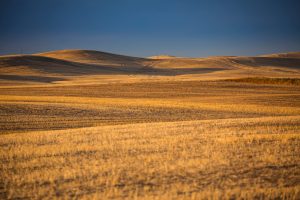Are Washington Summers Changing? A long-term look at Washington Precipitation Trends
If you have lived in Washington for long enough, you are probably well aware that our dry and sunny summers end predictably around October or early November when fall rains and cloud cover move in.
Read moreTrends in the Timing of Spring Across Washington
There are a truly dizzying number of ways to measure the start of spring: Is it when lilacs start blooming and grapevines begin to leaf out? Or is it that first warm day of the season when local parks fill up?
Read moreHas it seemed cold and snowy during February in recent years?
Some folks have been remarking on how often it has been cold and sometimes snowy in February during the past decade or so. In part this can probably be attributed to the just-completed February of 2025, which has been the snowiest month of the winter for much of the state, especially at lower elevations on both sides of the Cascade Mountains.
Read morePotential Evapotranspiration: Extreme Days in Eastern WA
This piece represents a follow-on to previous work focusing on summer seasonal mean trends in potential evapotranspiration (pET) in eastern Washington state (Bond and Bumbaco 2015). Our primary objective is to show how yearly counts of high pET days have varied since the late 1980s.
Read moreWinter Precipitation Variability in Washington State
The last few months have featured considerable fluctuations in precipitation across WA state relative to seasonal norms. While such fluctuations have certainly occurred in the past and will continue to be part of our climate, they serve as a good excuse for taking a quick look at some of the observed temporal and spatial variability in winter precipitation in WA state.
Read moreWhipsaw: From an Exceedingly Warm October to a Cold November 2022
As described in this newsletter, WA state experienced unseasonably cold temperatures in November 2022 after record warm temperatures in the previous month. OWSC has received a variety of inquiries about the rapid transition from summer to winter this year.
Read moreThe Near Endless Summer of 2022
After a very wet and cool spring, the Pacific Northwest had an unusually long stretch of warm and dry weather in 2022. The lack of rain was especially pronounced in western Washington, with many locations recording record low totals for the months of July through September.
Read moreTiming of Seasonal Changes in the Weather of Washington State
This corner of our newsletter has recently concerned the seasonality of weather events in Washington state, and we continue in a similar vein in the present edition. More specifically, we consider average changes in temperature and mean precipitation on a daily time scale over the course of the year for selected locations in Washington.
Read moreReady for Fall Rains?
This piece is intended to complement last month’s piece on the decline of the frequency of heat waves in WA state during the late summer. More specifically, here we describe how soon we can expect to begin enjoying our fall rains, based on historical data.
Read moreFrequency of Hot Temperatures in Summer
This month’s highlight is inspired by the unusually long-lasting heat wave in WA that occurred during the last week of July 2022. We were interested in how the frequency of hot temperatures, in terms of not just maximum but also minimum values, changes over the latter part of summer.
Read more



